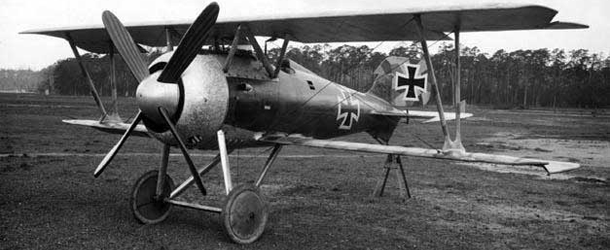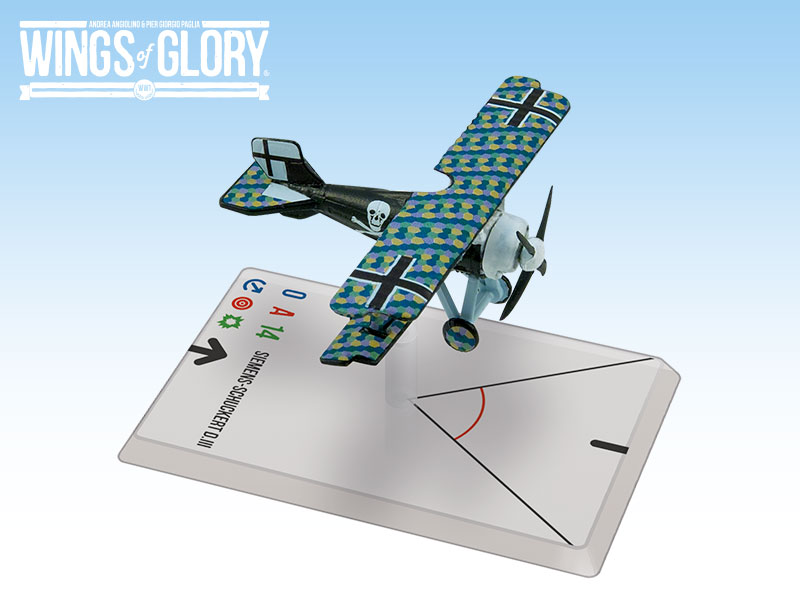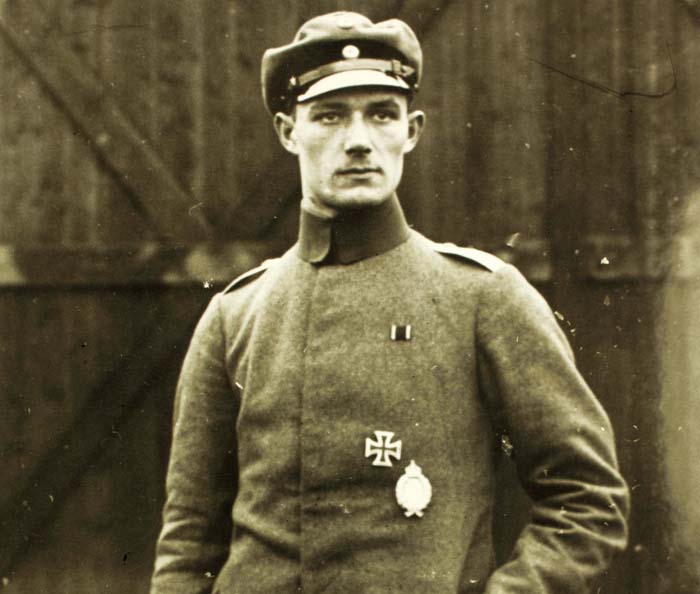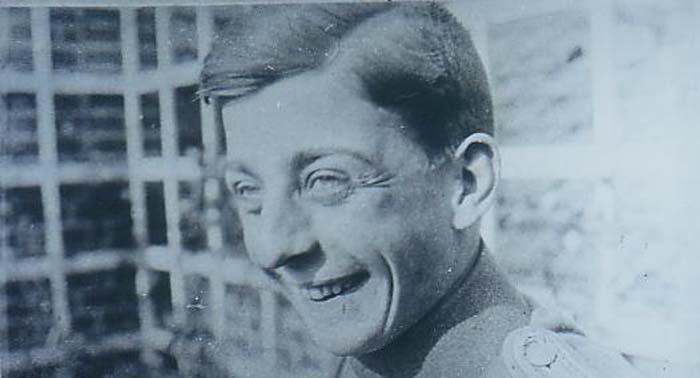The last article presented the Siemens-Schuckert D.III fighter. Now, it’s time to learn a bit more about the pilots of the three versions of this aircraft featured in the WW1 Wings of Glory Airplane Packs: the German Aces Helmut Lange, Joseph Veltjens, and Olivier Freiherr von Beaulieu-Marconnay.
Helmut Lange
Helmut Lange served in Jagdstaffel 26 during World War I and, during his career, piloted various aircraft, including the Siemens-Schuckert D.III.
Under the leadership of Bruno Loerzer and Franz Brandt, Lange scored nine aerial victories in the skies of France from February to November 1918. His defeated enemies included the Sopwith Camel, Bristol F.2 Fighter and Airco DH.9.
Afterward, Helmut Lange temporarily commanded the Jagdstaffel 26 from August 22 through 12 September 12, 1918. For his victories, Lange was awarded the Iron Cross.
Although Lange almost certainly survived the war, it is not known what became of him.
Joseph Veltjens
Joseph Veltjens's biography is much more eventful. One of the best aces of German aviation, he scored 35 victories during the First World War.
Veltjens was born in Geldern on 2 June 1894. He was the son of a factory manager and attended Humanisti High School in Berlin, and then Technical University in Charlottenburg, where he studied mechanical engineering, his prime interest.
He was prompt in enlisting with the German Army at the outbreak of war in August 1914, joining the Kaiserin Augusta Guards Regiment Nr. 4 on 3 August. Four days later, he and his regiment were at the front. When his column was attacked by the French, Veltjens and three others tried unsuccessfully to defend it and the vehicles were set on fire.
At the close of the following year, at age 21, he requested a transfer to the burgeoning German air service; he took his pilots examination on 15 December after three solo flights. Upon gaining his pilot's license in December 1915, he was posted to FA23 in May 1916. Initially charged with reconnaissance duties, he did so well he was commissioned as a Leutnant der Reserve (lieutenant in the reserves).
In March the following year, Veltjens (nicknamed “Seppl”) was posted to Jasta 14. Now flying with his trademark barbed arrow painted along his aircraft's fuselage, he was permitted to assume combat missions. Veltjens scored his first victory, over a SPAD, on 14 April 1917, flying an Albatros D.III with his personal marking. By 1 June, he had downed three more SPADs and a Farman.
The following March, Veltjens joined Jasta 15, taking command of the squadron in mid-May. The same month he received the Knight's Cross with Swords of the Order of the House of Hohenzollern and the Iron Cross (1st Class). Within three months, the even more prestigious Pour le Merite followed.
Ending the war with 35 total confirmed victories, Veltjens saw further action during the Second World War, serving as Herman Goering's emissary to Finland in 1940 with the rank of Lieutenant Colonel.
He was killed in an aircraft accident on 6 October 1943, while en route to Rome. The plane in which he was travelling flew into the side of a mountain while trying to evade pursuing British fighter aircraft as he traveled, again on behalf of Goering, for a visit with Mussolini.
Olivier Freiherr von Beaulieu-Marconnay
Olivier Freiherr (Baron) von Beaulieu-Marconnay (or 'Bauli' Beaulieu-Marconnay, as he became known in the air service) was born in Charlottenburg on 14 September 1898, the son of an aristocratic Prussian army captain.
When World War I started in August 1914, he was a sixteen-year-old high school student. The following year, still 16, he volunteered to serve as a cadet in his father's former regiment, the 4th Prussian Dragoons. He served with the Dragoons in Russia and participated in fighting in the Rokitno Swamps in the summer of 1916. He was promoted to leutnant in July 1916, and was awarded the Iron Cross First Class later in the year.
He then transferred to the German air service in 1917, and by November had qualified as a pilot. On 1 December 1917, he was assigned to Jagdstaffel 18. He paid tribute to the 4th Prussian Dragoons by having a personal insignia painted on all his planes consisting of a numeral 4 merged with a capital letter D.
His planes also featured a blue fuselage, yellow wheel covers, and nose painted yellow to the cockpit. Von Beaulieu-Marconnay served with Jasta 18 without success until his transfer to Josef Veltjens' Jagdstaffel 15 on 20 March 1918.
Jasta 15 had recently received the new Siemens-Schuckert D.III fighters and were limited to defensive operations, as they had orders forbidding flights over enemy lines for fear one of the new airplanes would fall into Allied hands. However, on 28 May 1918, a formation of French Dorand AR.2s were reported over German-held territory. The jasta scrambled to intercept and Beaulieu-Marconnay scored his first victory, bringing down an AR2 aircraft over Soissons.
This first victory was followed nine days later with two further victories, a DH4 and SE5a aircraft apiece. The following month he scored regularly, becoming an ace on 11 June. A week later he had run his total to eight. A double victory on August 9th, made him a double ace. Within three months, the total had raced up to 21, including six Allied aircraft brought down in just four days.
Despite being only 19 years old, Beaulieu-Marconnay was appointed to command Jagdstaffel 19 on 4 September. He would begin his tenure as commander by totaling ten victories in September and four more in October. His 25th, and last, confirmed victory came on 10 October 1918.
On October 18, in the confusion of a dogfight, Beaulieu-Marconnay was seriously wounded in the thigh, possibly as a result of 'friendly fire' from a fellow German pilot from Jagdstaffel 74. He managed to return to his home airfield and land safely. He was rushed to the hospital, bleeding freely and in very critical condition.
The award Pour le Merite was reportedly rushed through, as the Blue Max could not be awarded posthumously and to procrastinate risked the young ace's death while he was honored with only the Iron Cross. Notice of the award was forwarded to the hospital on 26 October 1918. He was the youngest recipient of the 'Blue Max.' Olivier Freiherr von Beaulieu-Marconnay, who had lingered with his wound for ten days, however, died six hours before the news arrived, possibly as the result of a post-operative infection.
He was buried in the famous Invalidenfriedhof in Berlin.
Information sources: The Aerodrome, Wikipedia, First World War, WikiMedia, Fliegergraeber.de/.












